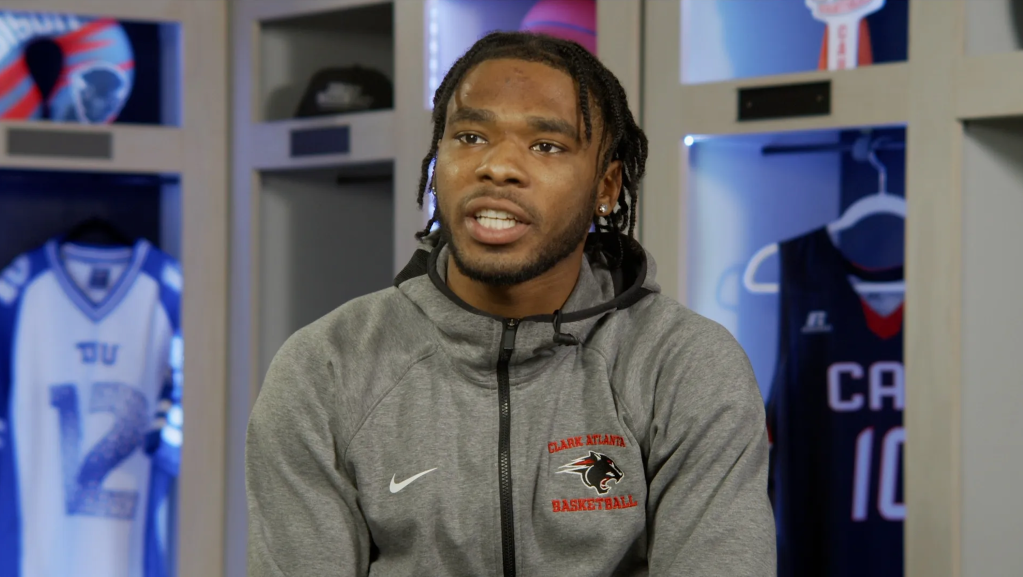Lorraine Hansberry is perhaps one of Civil Rights’ most vital figures. In fact, Dr. Martin Luther King Jr. predicted the impact her legacy would have on the Black community in a telegram read at her funeral. But beyond the success Hansberry achieved with her play, the acclaimed A Raisin in the Sun—the first play written by a Black woman to be produced on Broadway with a Black director (Lloyd Richard) and the New York Drama Critics’ Circle best play of 1959—not much is known about her story.
“In our research we realized that, having access to papers, there were a lot of misinterpretations and there were a lot of mistakes on the web about Lorraine Hansberry,” award-winning documentary filmmaker Tracy Strain—who also wrote and directed The Story We Tell, an installment of PBS’ three-part documentary, Race: The Power of an Illusion—tells CASSIUS of working on the film. “I just wanted her to get her due.”
“There are many stories you can tell about Lorraine and should tell about Lorraine,” Strain states later, “but the one I thought needed to be told first was the story of her as an artist-activist.”
CASSIUS had the pleasure of talking to Strain about her first introduction to Hansberry, as well as the importance of capturing her full and nuanced story on film.
CASSIUS: The film was beautifully done. I had a chance to watch it yesterday, and another one of our editors, Jada Gomez, watched it a couple weeks ago. We can’t stop talking about it.
Tracy Strain: That’s so nice to hear! That’s what you dream of, you know? I wanted to make a film that resonated with people in that way and I’m so happy it’s worked out. It’s been a 14-year journey, and you just never know what’s gonna happen—starting with us getting into the Toronto International Film Festival. It was such a blessing to start its life and things have continued from there in a very positive way. It’s great that people have appreciated the things that we’ve done. We wrestled with the content for days and nights and weeks and there’s so many different ways we could have put this together. So we’re really happy that the story we elected to tell and the way we chose to tell it is resonating with a wide range of audiences. I think of African Americans as my primary audience. Of course I want a white audience to like it as well, but it was really important for me [to] have that story treated with care and reverence. She died in 1965 and this is the first feature documentary [about her].
CASSIUS: Tell me more about the journey. What was the experience like working on the film?
T.S.: The best part of the journey was thinking about these ideas and Lorraine’s lifetime and art. I always loved the research phase of any of these documentaries that we do. I think it’s because all the possibilities are so open. I read a lot of books about what was going on during her lifetime, so I read books about The Great Migration, The Great Depression, World War II, the post-war period. I read books that were popular during different periods, because Lorraine Hansberry referenced a lot of different things in her letters and writings. I read, of course, about the Civil Rights movement. And the other thing that happened is I had the benefit of working with other documentary projects that covered those time periods. I worked on, as an associate producer in the early ’90s, on The Great Depression series, so I had already thought deeply about that time period. I had the benefit of interacting with scholars that were specialists in that time period. I also knew about archival material. I did a film for [PBS’ “American Experience” series] called Building the Alaska Highway, so I had a chance to explore the notion of the double victory and how important it was for African Americans during World War II, [and other films I worked on] covered Lorraine Hansberry’s life, so I kind of had this grounding before I literally started working on Sighted Eyes | Feeling Heart.
There’s a way sometimes I feel like I think we have to go through a lot of effort to have our stories appear legitimate and worthy, and I think that was happening for a long time. And I do think we, more recently, as films started coming out about Nina Simone and a second film about James Baldwin—because there was one in the past called Price of the Ticket—and we’re hitting these civil rights anniversaries, and then what’s going on with our society now, it’s like we’re going backwards in terms of race relations and discrimination, so people are hungry.
The way Lorraine Hansberry’s words resonate has been really powerful for a lot of people—and disappointing [laughs] that you can use any of her quotes and they’re still relevant.The way Lorraine Hansberry’s words resonate has been really powerful for a lot of people.
CASSIUS: When did you first learn about Lorraine Hansberry and what about her story moved you to tell it on film?
T.S.: I first learned about Lorraine Hansberry as a 17-year-old senior in high school who was living in the suburbs. My grandmother came out to the suburbs, picked me and my sister up, and took us into town to see a play, To Be Young, Gifted and Black. It was a play that was put together after Lorraine Hansberry’s death by her ex-husband Robert Nemiroff, and it [opened at] Cherry Lane Theater in 1969, but by the time I saw it, it was 1978. People were putting on [versions of the play] around the country. Just hearing her words, hearing this young voice talking about race, class and gender, it really just hit me. It just resonated. I had never encountered a young, Black woman who was thinking about these kinds of things, who was successful and was smart. To borrow her phrase, she just entered my consciousness and stayed there. It wasn’t until the 80s after I graduated to go to college that I decided I wanted to be a filmmaker. Really it was just Lorraine herself that I found interesting, and she died young. It seemed there was a story there to tell. Little did I know how complex and layered her story really was. I had no clue. It was kind of a compulsion.
CASSIUS: I definitely learned a lot myself while watching. What do you think viewers will be most surprised to learn about her?
T.S.: What people tell me, because I had the great privilege of seeing the film at screenings and film festivals, and it’s just how smart and outspoken she was. There’s a way that—I guess because she died young—there’s a way that she’s been positioned as a soft, warm, fuzzy integrationist, which she wasn’t. So I think that’s what’s surprising to people. She was fierce and she was totally committed to bringing about change. And I think that’s what’s inspiring about her, especially right now in our society. As Imani Perry said, she wanted freedom—now.
CASSIUS: Right. I think that’s definitely one of the things that stood out to me the most. I was also intrigued by what I was able to learn about, as the film worded it, her “private life” as a self-identified “heterosexually married lesbian.” It, of course, makes me think about the role queer women of color have played in civil rights throughout history and in the present—namely Black Lives Matter, which has two Black women founders who identify as queer. With that in mind, what do you think this part of Lorraine’s story means in the context of this generation?
T.S.: There are many stories you can tell about Lorraine and should tell about Lorraine, but the one I thought needed to be told first was the story of her as an artist-activist because of the notion that people saw her as this sort of one-hit-wonder, maybe positioned as this sort of integrationist. A Raisin in the Sun is this soft, safe play. There’s a way that [this notion] has taken away from the intent of the writer. So if I’m telling the story about an artist-activist on a journey, it’s important to tell a complete picture. The story of her private life is important because it’s part of this journey. She was involved in activism behind the scenes and it provides an interesting contrast in terms of storytelling and story structure, but it’s also a part of her journey. So, in a way, I wasn’t trying to do anything specifically related to the present. I think the best way to make a film, and I think that Lorraine would agree, is to be very true to the characters. You’ve probably heard her quote. She says in order to achieve the universal, you have to address the very specific.
CASSIUS: Yes. Love that quote so much.
T.S.: Yeah! So I’m thinking, this is a woman who has been outspoken in [other] areas of life, but then this private life is hidden. The fact that it wasn’t public seemed very much a contrast to who she was.
CASSIUS: If nothing else, what’s the one thing you want viewers to walk away with upon seeing this documentary?
T.S.: There’s four things. I want people to walk away inspired, especially younger people. I want young people to be inspired to do well in school, to know yourself. I want people to go out and be creative, and like [Lorraine] says in the film, tell our stories. [I want] people who are wrestling with identity to know that there’s someone like Lorraine Hansberry who was doing the same and to feel less alone. And finally, activism, and for me this is the big one. You’ve gotta get involved. And there’s not one way to get involved. People have different skills and strengths, so I think people should get involved in a way that’s consistent with their talents and strengths.
“Sighted Eyes | Feeling Heart” premieres tonight (January 19) on PBS at 9 p.m. Learn more about PBS’ “American Masters” program here.
















